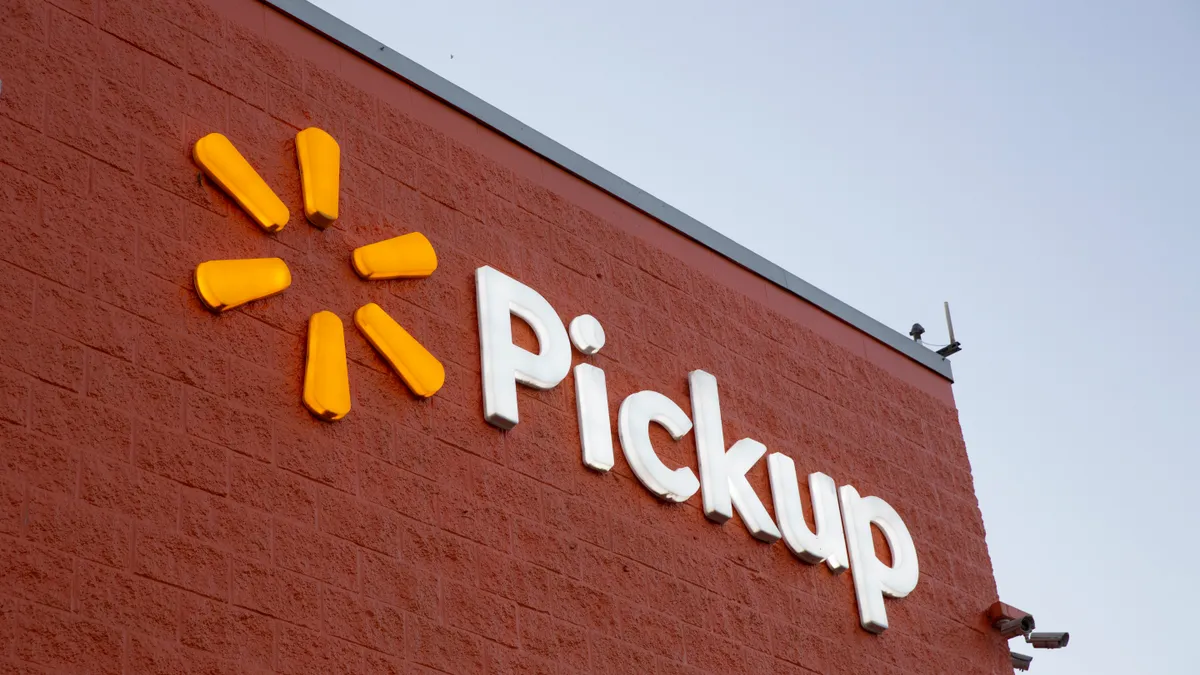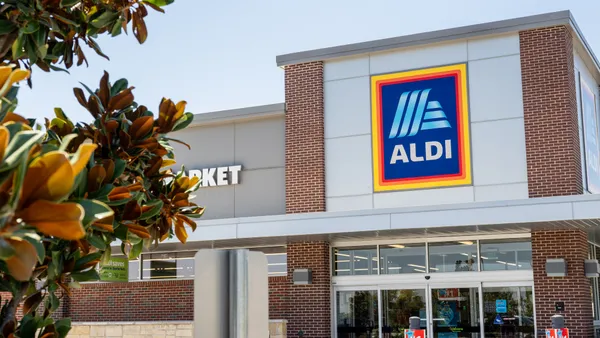Dive Brief:
- With pandemic habits still driving shopping, Walmart blew away expectations for the second quarter, with U.S. comparable sales up 9.3% and e-commerce sales up 97% year over year, according to a press release. Operating income in the U.S. also grew by 8.5%. After adjusting for restructuring charges, growth in operating profit was almost double that, at 16.7%.
- Grocery sales, driven by strong growth in sales of fresh items, were up by about $3 billion in the quarter and have increased by just over $8 billion in 2020, Walmart U.S. President and CEO John Furner said Tuesday during a conference call with analysts.
- Sam's Club sales also spiked, with comps up 13.3% and e-commerce sales growing 39%. New memberships at Sam's increased more than 60% in Q2.
Dive Insight:
Walmart's second quarter was once again defined by COVID-19, providing a mirror image to the world of "nonessential" retailers that, after having closed for months in some cases, carry more discretionary products during a time of both economic and public health uncertainty.
Walmart, meanwhile, sells products that are most in demand during the pandemic. Comps in the grocery category were up by mid-single digits in Walmart's U.S. business during Q2, with record volumes for the retailer's pick-up and delivery services, according to a company presentation. On the conference call, CEO Doug McMillon said that the company benefited from a trend toward more at-home meal making among American households during the period.
Walmart also saw an improvement in the availability of delivery slots for online grocery customers. After having to reduce the number of slots at the end of the first quarter because of inventory constraints, the company increased the number of slots during the second quarter by 30%, Furner said.
Furner added that Walmart has been testing an automated picking system manufactured by Alert Innovation at a store in New Hampshire and will be expanding the pilot to Texas over the coming months. "I think mostly we're optimistic about the number of orders we'll be able to fill from these sorts of installations going forward," he said.
Walmart's performance during the quarter, which roundly beat analyst expectations, "continues to raise the bar for multi-channel retail as the company continues to leverage its massive store base to support its e-commerce initiatives," according to Moody's Vice President and Senior Credit Officer Charlie O'Shea.
The nearly 100% growth in online sales, which also saw increased margin rates, come after a refocusing around Walmart's flagship e-commerce site. The retailer recently combined its in-store and e-commerce buying teams along with a series of other strategic moves, including the sale of ModCloth, and the winding down of the Jet.com website and high-end shop-by-text service, Jet Black.
"The fact that margins actually expanded despite this massive increase in volume and significant COVID-19 costs provides validation that online-oriented operating costs are beginning to be rationalized, as well as an indication that there was some favorable mix shift away from lower-margin consumables and toward higher-margin general merchandise categories," O'Shea said.
McMillon also addressed reports about a ramping up of the company's delivery membership program, framed in reports as a competitor to Amazon's Prime membership. After a test around grocery delivery last year, McMillon said that "we've proven to ourselves" that Walmart can pick and deliver across a wider array of products and "deliver with speed nationally." He didn't, however, comment on timing and said the company would share more "when appropriate."
For all of Walmart's sales and profit increases, the obvious question hanging over it is whether Q2 marked a new normal or a high-water mark of COVID-19 and stimulus trends bound to recede.
Over the latter part of the quarter Walmart showed a "slight slowdown in performance," GlobalData Retail Managing Director Neil Saunders said in emailed comments. McMillon said on the call Tuesday that back-to-school sales are off to a slower start than usual, following the uncertainty around school starts.
The CEO also noted the uncertainties around the rest of the year, given dueling head and tailwinds driving sales, as well as the recent expiration of federal stimulus benefits, which helped boost Walmart's sales in past months.
Sam Silverstein contributed reporting to this story.











